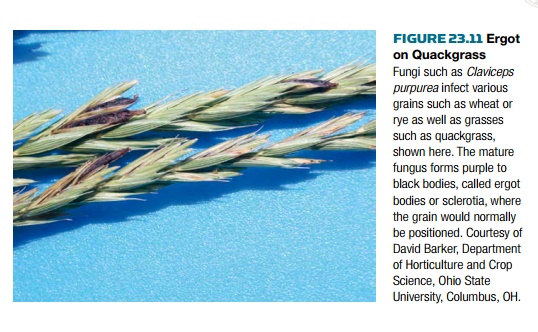Chapter: Biotechnology Applying the Genetic Revolution: Biowarfare and Bioterrorism
Agricultural Biowarfare
AGRICULTURAL
BIOWARFARE
An alternative form of biological
warfare is the destruction of the food supply. Instead of using pathogenic
microorganisms that target humans directly, infectious agents that target food
animals or crop plants might be used. Because domestic animals also rely on
crops to eat and humans can survive on a vegetarian diet, in practice the
obvious targets are staple crops such as cereals or potatoes. A wide variety of
diseases exist that destroy such crop plants and might be used for biological
warfare. Primitive fungi, such as rusts, smuts, and molds, cause many plant diseases.
Their spores are often highly infectious, dispersed by wind or rain, and in
many cases there is no effective treatment.

Soybean rust and wheat stem rust are
examples of pathogenic fungi that could destroy major crops. In addition to
destruction of the crop, certain fungi may produce toxins. For example, when
the ergot fungus grows on rye or other cereals, it produces a mixture of toxins
that cause a syndrome referred to as ergotism, which causes sickness and death
in people and livestock ( Fig. 23.11 ). An entire crop might have to be
screened even if only a small part was infected, causing major disruption and
economic losses. Spores from pathogenic fungi could be sprayed into the air
from a single small plane. Another approach would be the deliberate infection
of seeds. Many seeds planted in the United States today are now grown in other
countries, where they might be accessed for contamination before importing. Modern
agriculture is especially vulnerable to biowarfare because large acreages are
planted at high density with genetically identical cultivars of major crops.
This reduces the genetic variability that makes natural populations relatively
resistant to many infections. It also makes it relativelyeasy for any infection
to spread rapidly. Another advantage of agricultural biowarfare is that the agents
used are harmless to humans and so would pose no danger to those using them.
Related Topics